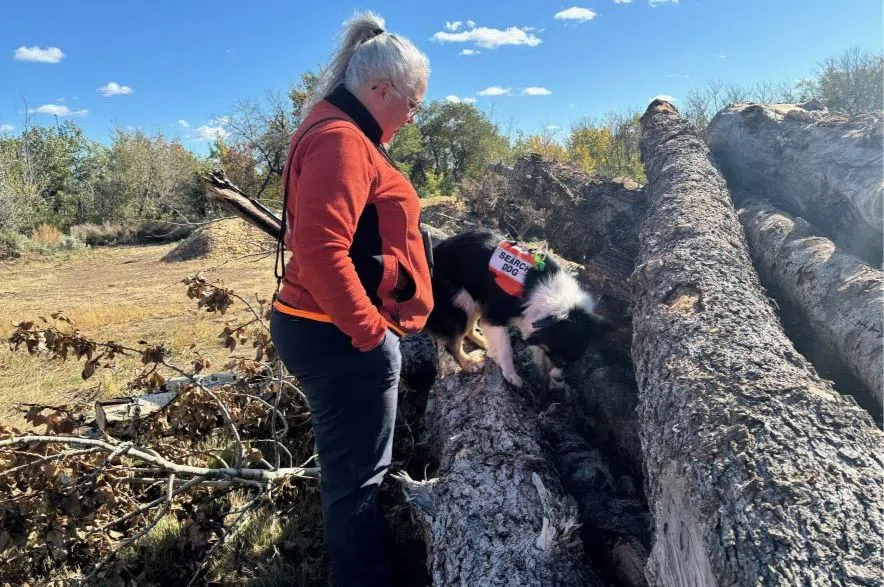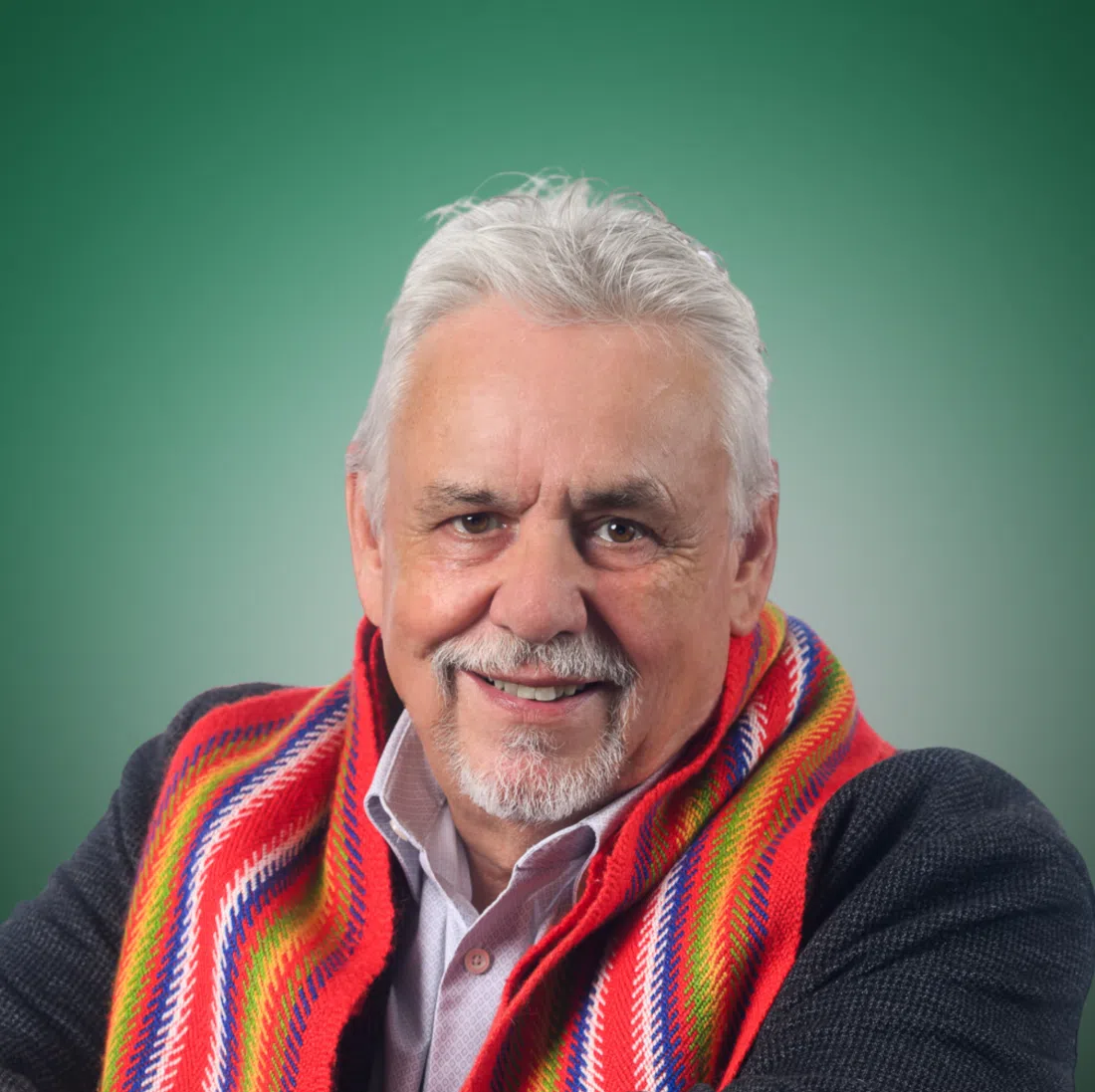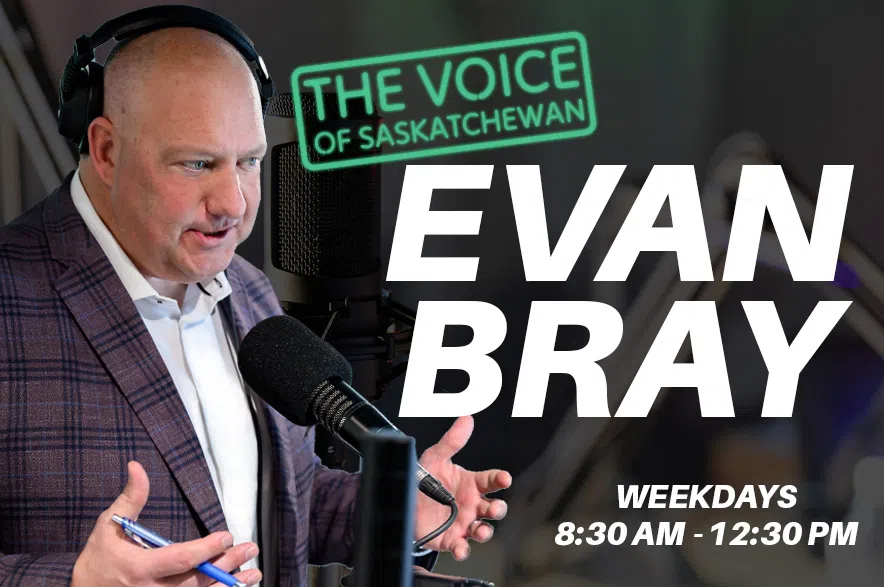When Erika Quiring joined Saskatoon Search and Rescue in 2018, she thought some of her skills could be useful within the group.
She also eventually wanted to train a dog in a specialized capacity.
Read more:
- SWAT and canine units called in during arrest in Regent Park
- Saskatoon cop who released dog that injured hiding suspect wasn’t negligent: SIRT
- Weyburn police dog Beaumont passes after over a decade of service
Over the last two and a half years, that’s exactly what she’s been doing with her dog Hawk, who she has been training in the human remains profile.
They have been certified as the first civilian human remains detection team in Saskatchewan.
She said she also joined the Search and Rescue Dog Team Association of Alberta, which been doing this type of work since 1989.
It started off with lots of basic obedience training, agility classes, “far control” commands with sheep and then training with human exhibits.
“It could be anything like all the hair from my hairbrush… every root of every hair has the odour of the human being on it,” she said.
In Alberta, Quiring said there’s a midwives group that provides placenta donations, which are very rich in human tissue and blood.
“We have some ethically-sourced human bone, and I’m also always looking for teeth — extracted teeth,” she said.
Hawk is trained to seek out and communicate to Quiring when human remains are detected during a search.
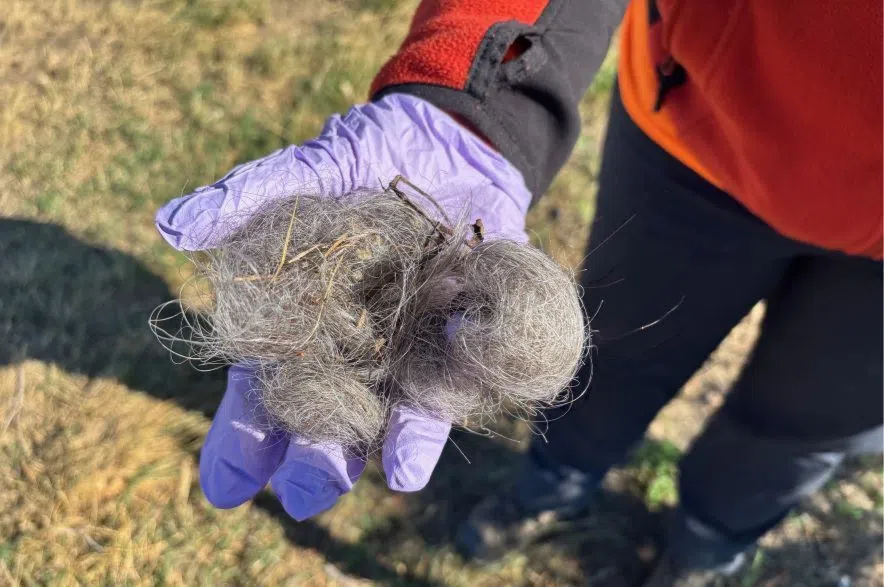
Quiring holds a handful of human hair, one of the items used to help train Hawk to detect human remains. (Lara Fominoff/650 CKOM)
“He has an alert that he makes when he finds something, and we work together,” she explained.
“Obviously he’s got the sniffer, and then I interpret that and give him commands about where I want him to go, and what I want him to do as we’re searching.”
While searching for human remains can be mentally challenging and potentially traumatic, it’s something Quiring believes is a vitally important task, especially for families who hope for closure or are searching for answers about what may have happened to their loved ones.
“It’s impossible to live in this community without having friends who are impacted by missing persons. I myself have several connections within my friend group and so on to individuals who are missing. Some have maybe been found, and some have not,” she said.
Quiring said she and Saskatoon Search and Rescue will be reaching out to the Saskatoon Police Service, the RCMP and the Saskatoon Fire Department to figure out whether she and Hawk may be able to offer their services in the future.
In a statement, superintendent Richard Bueckert indicated that the Saskatoon Police Service does not currently have a team trained in finding or identifying human remains.
“Law enforcement detection dog teams are trained using methods that have been tested, validated, and recognized in court. In any suspicious death investigation, all investigative techniques must meet a high standard to ensure they can withstand judicial scrutiny,” the police force said.
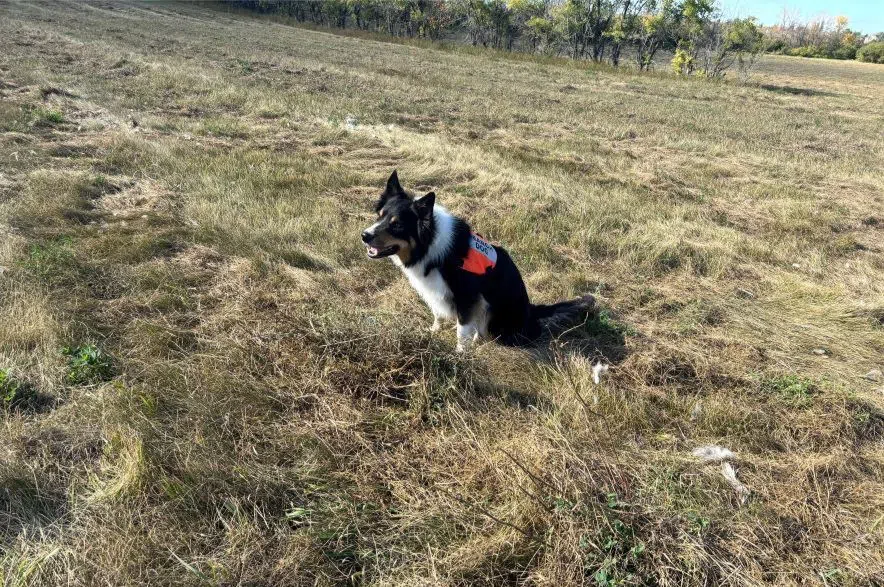
When Hawk locates human remains or articles containing human remains, he sits and barks to alert Quiring of the location. (Lara Fominoff/650 CKOM)
“To our knowledge, no police services in Saskatchewan — or Canada — currently utilize civilian cadaver dog teams for investigations. While not impossible, their involvement would raise important considerations, including verifying their training and capabilities, as well as safeguarding the well-being of civilians.”
Despite the potential roadblocks, Quiring said she remains hopeful.
“All (Search and Rescue Dog Team Association of Alberta) dogs, are certified through Edmonton Police Service, ensuring they meet recognized standards of operational readiness,” she said.
Quiring said she also hopes to continue training in order to gain certification for water searches, which would include drownings and other types of human remains recoveries.
“If we’re able to assist with that and provide some resolution to those families and assistance to the agencies, then we’re really hoping for that,” she said.
